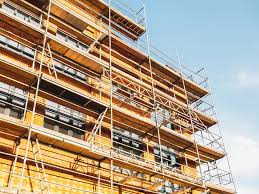Oct . 18, 2024 10:25 Back to list
H20 Timber Beam Exporters and Their Global Market Trends
The Timber Beam H20 Exporters An Overview
In the realm of construction and building materials, timber has remained a steadfast choice due to its inherent qualities such as strength, durability, and versatility. Among the various products derived from timber, H20 beams have gained significant popularity in the construction industry, particularly for formwork applications. This article delves into the characteristics of H20 timber beams and explores the role of exporters in making this crucial building material accessible worldwide.
What are H20 Timber Beams?
H20 timber beams, also known as H20 formwork beams or H20 wooden beams, are engineered wood products specifically designed for use in construction projects. The name H20 refers to the dimensions of the beam, which typically measures 20 cm in depth, and its H-shaped cross-section, providing excellent load-bearing capacity while minimizing weight. This combination of features makes H20 beams ideal for creating formwork systems, supporting slabs, and other structural applications.
The composition of H20 beams usually consists of a combination of solid timber and engineered wood products. The outer layers are often made from high-quality timber, while the core may contain plywood or oriented strand board (OSB). This construction not only enhances the strength and stability of the beam but also contributes to its resistance to warping and cracking, ensuring a long lifespan even under challenging conditions.
Advantages of H20 Timber Beams
H20 timber beams offer a multitude of advantages that make them a favored choice among builders and contractors. Firstly, their light weight allows for easy handling and installation, reducing labor costs and time during the construction phase. Secondly, the beams’ robustness enables them to support significant loads, which is particularly important in formwork applications where stability is paramount.
Additionally, H20 beams are environmentally friendly. With the rising demand for sustainable building practices, these beams are an attractive option as they are often sourced from responsibly managed forests. By choosing H20 beams, builders can contribute to minimizing their environmental footprint while still achieving structural integrity.
The Role of Exporters
timber beam h20 exporters

As the demand for H20 timber beams continues to grow globally, exporters have become pivotal in bridging the gap between manufacturers and markets. Exporters facilitate the distribution of these beams to various construction sites around the world, ensuring that builders have access to the materials they need, regardless of their location.
One of the primary functions of H20 timber exporters is to ensure quality assurance throughout the supply chain. They often work closely with manufacturers to maintain production standards that meet international regulations and customer expectations. This includes inspecting the quality of the timber, verifying certifications, and ensuring that the beams adhere to required safety and performance standards.
Moreover, exporters play a vital role in navigating the complexities of international trade. They are well-versed in the logistical aspects of shipping timber products internationally, including handling customs regulations, tariffs, and transportation logistics. Their expertise ensures that H20 timber beams are delivered promptly and efficiently, minimizing delays that could impact construction projects.
Challenges Faced by Timbers Beam Exporters
However, the exportation of H20 timber beams is not without its challenges. Fluctuations in timber prices, varying regulations across countries, and environmental concerns can complicate the sourcing and distribution processes. Additionally, the competition among exporters is fierce, necessitating that they continuously innovate and enhance their service offerings to remain competitive in the market.
Another challenge is the rise in demand for sustainable materials. Exporters must increasingly focus on the source of their timber, ensuring that it aligns with environmentally friendly practices. This not only fulfills consumer demands but also helps in building a positive brand reputation in an environmentally conscious market.
Conclusion
H20 timber beams are an essential component of modern construction, and the role of exporters in this dynamic cannot be overlooked. They help bring high-quality building materials to a global market, supporting the construction industry while prioritizing sustainability and efficiency. As the industry evolves, so too will the strategies employed by exporters to meet the demands of builders and contractors while navigating the challenges of the ever-changing market landscape. Through their efforts, the future of H20 timber beams remains bright, positioning them as a cornerstone in contemporary construction practices.
-
High-Quality U Head Jack Scaffolding – Reliable Scaffolding Jack Head Manufacturer & Factory
NewsJul.08,2025
-
High-Quality I Beam H20 Leading Timber Beam H20 Material Factory, Exporters & Manufacturers
NewsJul.08,2025
-
High-Quality Powder Coating Steel Formwork - Durable & Corrosion Resistant Solutions
NewsJul.07,2025
-
Inclined Column Formwork Supplier – Durable & Precise Solutions for Unique Structures
NewsJul.07,2025
-
High-Quality Water Stop Solutions Trusted Water Stop Company & Suppliers
NewsJul.07,2025
-
High-Quality Formwork Material Supplier Reliable Manufacturer & Factory Solutions
NewsJul.06,2025